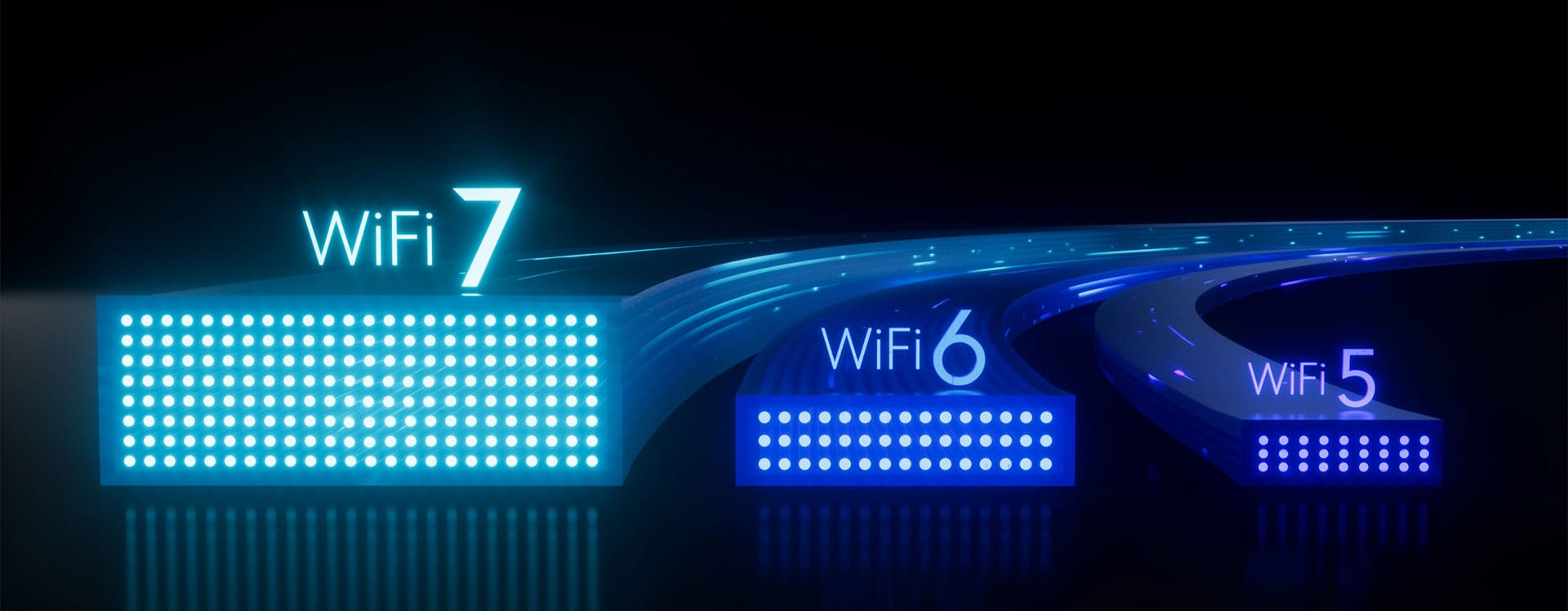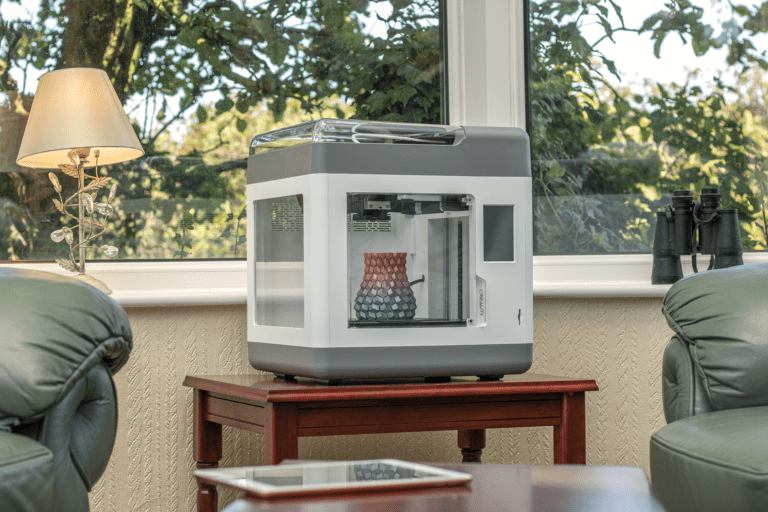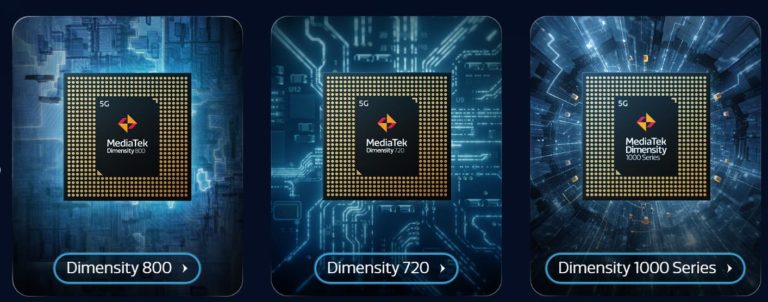Any links to online stores should be assumed to be affiliates. The company or PR agency provides all or most review samples. They have no control over my content, and I provide my honest opinion.
Following the MediaTek announcement of the Wi-Fi 7 Filogic 860 and Filogic 360 chipsets, I thought it would be good to cover some of the key technologies used by Wi-Fi 7, which will significantly improve the performance in comparison to Wi-Fi 6/6E.
For me, Wi-Fi 7 has to potential to be a significantly bigger jump in performance in comparison to the improvements Wi-Fi 6 brought vs Wi-Fi 5.
Multi-Link Operation (MLO)
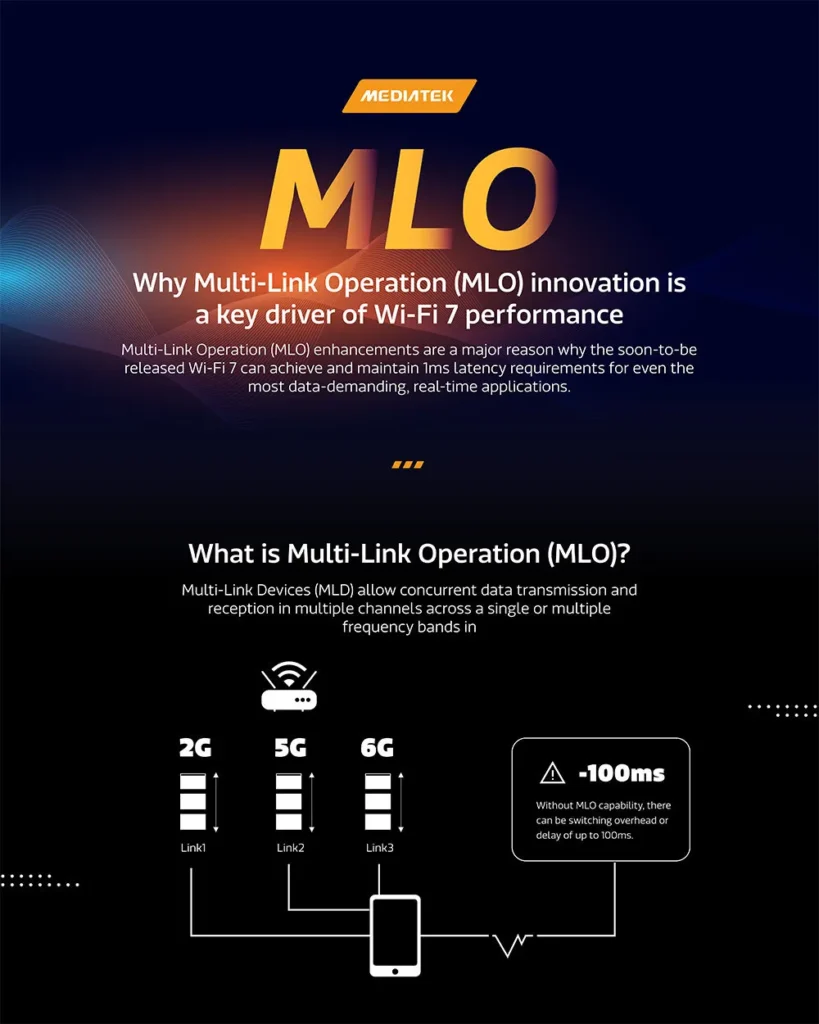
Multi-Link Operation (MLO) is one of the most groundbreaking features in the upcoming Wi-Fi 7 (IEEE 802.11be) standard. MLO allows a Wi-Fi device to utilize multiple frequency bands simultaneously. Typically, these bands include the traditional 2.4 GHz and 5 GHz, along with the newer 6 GHz band. This simultaneous multi-band operation marks a significant evolution from previous Wi-Fi generations, which could operate on only one band at a time.
How MLO Benefits Clients
- Enhanced Data Throughput: By leveraging multiple bands concurrently, MLO drastically increases data throughput. This is akin to having several internet connections at once, each contributing to the overall data transfer rate.
- Reduced Latency: For applications demanding real-time responsiveness, such as online gaming or video conferencing, MLO’s ability to operate over multiple bands simultaneously reduces latency significantly. This improvement is crucial for an increasingly connected and instantaneous digital world.
- Reliability and Consistency: MLO enhances connection reliability. If one band becomes congested or suffers from interference, the system can lean more heavily on the other bands, ensuring a consistent and stable connection.
- Efficient Band Utilization: In environments with numerous overlapping networks, such as apartment buildings or offices, MLO allows devices to navigate crowded bands more effectively, dynamically allocating data across less congested bands.
Performance Improvement Over Wi-Fi 6
While Wi-Fi 6 introduced several improvements over its predecessors, including better handling of multiple devices and increased data rates, it was still limited to single-band operation for any given transmission. This meant that a device could only communicate over the 2.4 GHz, 5 GHz, or 6 GHz band at any one time.
MLO in Wi-Fi 7 changes this dynamic entirely by allowing devices to transmit and receive data across multiple bands simultaneously. This multi-band operation significantly elevates the performance in several ways:
- Higher Aggregate Speeds: The combined bandwidths of the 2.4 GHz, 5 GHz, and 6 GHz bands under MLO can offer aggregate speeds that are far beyond the capabilities of Wi-Fi 6.
- Greater Flexibility and Efficiency: MLO allows for more intelligent and dynamic use of the available spectrum. If one band is congested or experiencing interference, the system can automatically shift traffic to other bands, maintaining optimal performance.
- Improved Network Performance in Diverse Environments: Whether in densely populated urban areas or in situations with many devices competing for bandwidth, MLO ensures more robust and reliable network performance.
320MHz Channel Width
The introduction of 320MHz channel width is a key feature in the upcoming Wi-Fi 7 (IEEE 802.11be) standard, marking a significant advancement from the 160MHz channel width utilised in Wi-Fi 6. Channel width in Wi-Fi technology refers to the frequency band breadth used to transmit data. Think of it as a lane in a highway; the wider the lane, the more data that can travel through it simultaneously. With 320MHz, Wi-Fi 7 essentially doubles the maximum channel width found in Wi-Fi 6.
Benefits for Clients
- Significantly Higher Data Rates: The primary advantage of a 320MHz channel width is the ability to achieve much higher data rates. This increase is due to the larger amount of spectrum available to transmit data, allowing for more information to be sent and received simultaneously.
- Enhanced Network Efficiency: A wider channel width means more efficient use of the spectrum. With more space for data flow, devices can operate more effectively, reducing the time required to transmit the same amount of data compared to narrower channels.
- Better Handling of High-Bandwidth Applications: For activities requiring substantial bandwidth, such as streaming 4K/8K video, large file downloads, or high-definition video conferencing, the 320MHz channel width provides a significant performance boost, ensuring smooth and uninterrupted experiences.
Performance Improvement Over Wi-Fi 6
Wi-Fi 6 brought substantial improvements in network efficiency and speed with its 160MHz channels. However, Wi-Fi 7’s 320MHz channels take this a step further:
- Doubling the Peak Data Rates: By doubling the channel width from 160MHz to 320MHz, Wi-Fi 7 potentially doubles the peak data rates that can be achieved. This means faster downloads, uploads, and overall quicker data transmission across the network.
- More Room for Multiple Devices: In environments with many connected devices, such as smart homes or offices, the wider channels can accommodate more data traffic simultaneously. This reduces network congestion and ensures each device maintains high-speed connectivity.
- Reduced Latency: With more bandwidth available, data packets can be sent and received more rapidly, reducing the time it takes for a signal to travel between the device and the router. This is particularly beneficial for latency-sensitive applications like online gaming or real-time remote work tools.
- Enhanced Spectral Efficiency: The 320MHz channel width allows for more data to be packed into the available spectrum, increasing overall network capacity and efficiency. This is particularly useful in dense urban areas where wireless spectrum can be a scarce resource.
6Ghz Band
The 6GHz band is a newly allocated frequency spectrum for Wi-Fi use, introduced with Wi-Fi 6E and further expanded in Wi-Fi 7. This band spans from 5.925 GHz to 7.125 GHz, providing a broad and relatively interference-free spectrum for wireless communication. The addition of this band is a significant development, as it effectively quadruples the amount of airwaves available for routers and other Wi-Fi devices.
Benefits for Clients
- Less Congestion and Interference: The 6GHz band is less crowded compared to the traditional 2.4GHz and 5GHz bands, which are often saturated with numerous devices. This reduced congestion leads to less interference and more reliable connections.
- Higher Data Rates and Capacity: The 6GHz band offers wider channels (up to 320MHz in Wi-Fi 7), which translates to higher data rates and greater network capacity. This is especially beneficial for bandwidth-intensive applications like high-definition video streaming, virtual reality, and online gaming.
- Improved Latency: The wider channels and reduced congestion in the 6GHz band also contribute to lower latency. This is crucial for applications requiring real-time responses, such as online gaming, video conferencing, and certain professional applications like remote surgery or real-time data analytics.
- Enhanced Indoor Performance: The 6GHz band’s characteristics make it well-suited for indoor environments, providing strong and consistent coverage within homes and offices.
Performance Improvement Over Wi-Fi 6
Wi-Fi 6 introduced several enhancements in wireless technology, but it was primarily constrained to the 2.4GHz and 5GHz bands. The introduction of the 6GHz band in Wi-Fi 6E and its continued use in Wi-Fi 7 represent a substantial leap in performance:
- Expanding the Wireless Spectrum: The 6GHz band effectively provides a new ‘highway’ for Wi-Fi traffic, alleviating the congestion experienced in previous bands. This expansion is critical in accommodating the growing number of devices and data demands in modern networks.
- Higher Throughput and Efficiency: With the 6GHz band’s wider channels, Wi-Fi 7 can achieve much higher throughput compared to Wi-Fi 6. This means faster internet speeds and more efficient data transmission.
- Reduced Interference from Legacy Devices: Since older devices are not compatible with the 6GHz band, Wi-Fi 7 devices operating in this spectrum are free from interference caused by legacy Wi-Fi devices, further enhancing performance and reliability.
- Optimized for High-Density Settings: In environments where multiple Wi-Fi networks coexist, such as apartment complexes or office buildings, the 6GHz band’s additional spectrum helps in handling this high density more effectively, reducing overlaps and interference.
16×16 MU-MIMO Spatial Streams
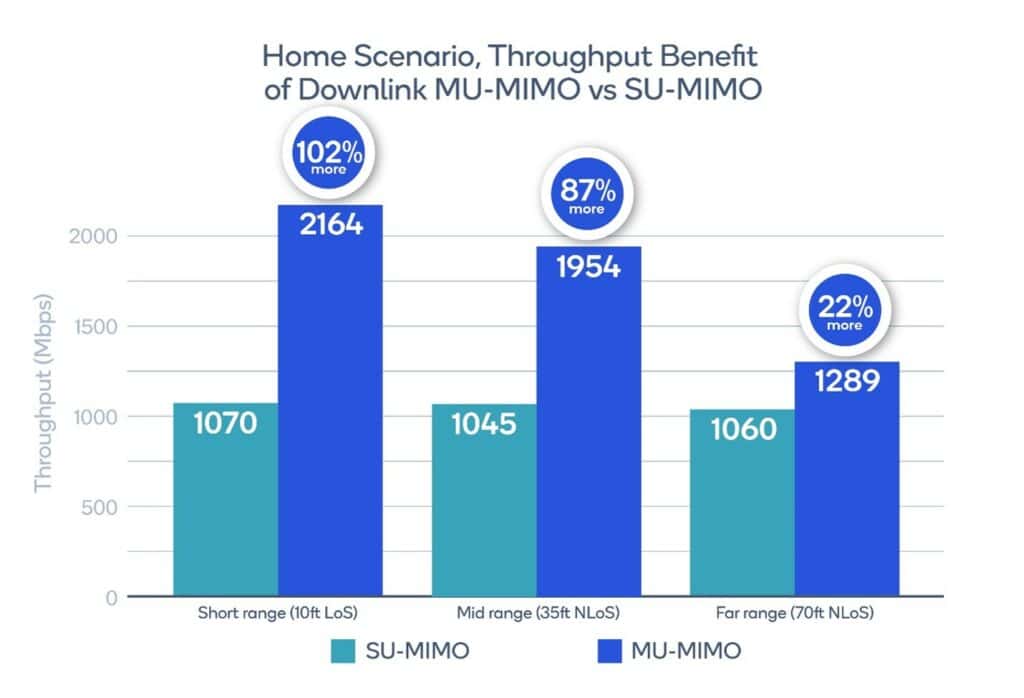
Multi-User, Multiple Input, Multiple Output (MU-MIMO) is a technology that allows a Wi-Fi network to communicate with multiple devices simultaneously. In Wi-Fi 7, this technology takes a significant leap forward with the introduction of 16×16 MU-MIMO spatial streams. This means that a Wi-Fi 7 router can handle up to 16 streams of data in both directions (transmitting and receiving) concurrently. This is a notable increase from the 8×8 MU-MIMO used in Wi-Fi 6, essentially doubling the number of concurrent communication pathways.
Benefits for Clients
- Increased Network Capacity: The 16×16 MU-MIMO capability significantly increases the network’s capacity to handle multiple devices simultaneously. This is particularly beneficial in environments with a high density of connected devices, such as smart homes, offices, or public spaces.
- Enhanced Individual Device Performance: With more spatial streams, individual devices can enjoy faster and more reliable connections. This is because each device has access to more data paths, reducing the likelihood of bandwidth bottlenecks.
- Improved Efficiency in Data Transmission: More spatial streams mean that data can be directed more accurately to specific devices. This spatial efficiency reduces interference and improves overall network performance, especially in crowded areas.
- Better Utilization of Available Spectrum: By efficiently using multiple spatial streams, Wi-Fi 7 can transmit more data over the same spectrum, making better use of the available wireless resources.
Performance Improvement Over Wi-Fi 6
While Wi-Fi 6 brought significant improvements with 8×8 MU-MIMO, Wi-Fi 7’s 16×16 MU-MIMO pushes these boundaries further:
- Doubling the Spatial Streams: By doubling the number of spatial streams from 8 to 16, Wi-Fi 7 vastly improves the maximum potential throughput for each device and the network as a whole.
- Enhanced for High-Demand Environments: In settings where numerous devices are competing for bandwidth, such as in corporate environments or IoT-heavy households, the increased number of streams allows for smoother operation of more devices concurrently.
- Reduction in Latency: With more streams available for communication, each device can receive data more quickly and consistently, leading to reduced latency in data transmission.
- Optimized for Advanced Applications: The capacity to handle more spatial streams equips Wi-Fi 7 to better support emerging technologies that demand high bandwidth and low latency, such as augmented reality (AR), virtual reality (VR), and ultra-high-definition streaming.
4K QAM
Quadrature Amplitude Modulation (QAM) is a technique used in wireless communication to transmit data by changing the amplitude of two carrier waves. In Wi-Fi 7, one of the standout features is the introduction of 4096-QAM, commonly referred to as 4K QAM. This technology represents a significant jump from the 1024-QAM used in Wi-Fi 6. Essentially, 4K QAM enables the transmission of more bits per symbol, which means more data can be packed into the same radio waves.
Benefits for Clients
- Higher Data Rates: The primary advantage of 4K QAM is its ability to dramatically increase data rates. With each symbol carrying more bits of information, the overall speed of data transmission is significantly boosted.
- Improved Network Efficiency: More efficient data encoding means that more information can be transmitted over the same frequency band. This efficiency is crucial in bandwidth-intensive scenarios, such as streaming high-definition content or transferring large files.
- Better Spectrum Utilization: 4K QAM allows for a more efficient use of the available spectrum, which is a limited and valuable resource in wireless communication. This makes it particularly advantageous in densely populated areas with heavy network usage.
Performance Improvement Over Wi-Fi 6
Wi-Fi 6 marked a significant improvement in wireless technology with the introduction of 1024-QAM, but Wi-Fi 7’s 4K QAM takes this a step further:
- Quadrupling the Symbol Capacity: 4K QAM can encode twice as many bits per symbol compared to 1024-QAM. This means that Wi-Fi 7 can transmit data at rates much higher than what was possible with Wi-Fi 6.
- Enhanced Throughput for All Scenarios: The increased data rate is not just beneficial for high-demand applications but improves overall network performance, making everyday internet usage smoother and faster.
- Robust Performance in High-Quality Applications: For applications requiring high-quality data transmission, such as 8K video streaming or high-fidelity online gaming, 4K QAM ensures that these can be supported with less buffering and higher quality.
- Adaptability in Various Environments: The sophisticated modulation technique of 4K QAM allows Wi-Fi 7 to adapt to different network conditions, maintaining high performance even in environments with potential signal interference.
Multi-RU Support
Multi-Resource Unit (RU) Support is a feature in Wi-Fi 7 that builds upon the Resource Unit concept introduced in Wi-Fi 6. A Resource Unit is a portion of a channel that can be allocated to a device for data transmission. In Wi-Fi 6, the concept of dividing channels into smaller RUs was implemented to allow more efficient use of the spectrum, particularly in dense environments. Wi-Fi 7 takes this a step further by introducing Multi-RU Support, allowing a single device to use multiple RUs simultaneously for its data transmissions.
Benefits for Clients
- Increased Data Throughput per Device: By utilizing multiple RUs at once, a device can achieve higher data throughput. This is particularly beneficial for devices that require high bandwidth, such as those streaming high-definition video or engaging in large data transfers.
- Improved Network Efficiency: Multi-RU Support allows for more flexible and efficient use of the available spectrum. It enables the network to cater to the specific needs of each device more accurately, allocating just the right amount of resources based on the device’s current data requirements.
- Enhanced Performance in Dense Environments: In areas with many connected devices, such as offices or public venues, the ability to assign multiple RUs to a single device helps in maintaining high performance even under heavy network loads.
- Reduced Latency: For devices that require low latency, like gaming consoles or virtual reality equipment, having access to multiple RUs means that their data can be sent and received more quickly, reducing delays.
Performance Improvement Over Wi-Fi 6
While Wi-Fi 6 introduced the division of channels into RUs, Wi-Fi 7’s Multi-RU Support dramatically enhances this capability:
- Flexibility in Resource Allocation: Wi-Fi 7’s Multi-RU Support offers more nuanced control over how the network resources are distributed among devices. This flexibility allows for more tailored and efficient network management.
- Higher Aggregate Throughput: With the ability to assign multiple RUs to a single device, Wi-Fi 7 can significantly increase the total data throughput of the network, surpassing what was possible with Wi-Fi 6.
- Improved Adaptability to Network Demands: Multi-RU Support in Wi-Fi 7 enables the network to adapt dynamically to changing demands. Devices needing more bandwidth can be allocated additional RUs on the fly, ensuring optimal performance at all times.
- Better Utilization of the Wireless Spectrum: By enabling multiple RUs to be used more effectively, Wi-Fi 7 maximises the utilisation of the available spectrum, which is particularly important in the increasingly crowded wireless landscape.
Target Wake Time (TWT)
Target Wake Time (TWT) is a feature that was initially introduced in Wi-Fi 6 (802.11ax) and is further refined in Wi-Fi 7. TWT is a power management protocol that enables devices to determine when to wake up and communicate with the network. Essentially, it schedules specific times for devices to transmit and receive data, allowing them to remain in a low-power, sleep state at other times.
How TWT is Achieved in Wi-Fi 7
- Scheduled Communication: TWT works by establishing specific intervals for data transmission between the Wi-Fi router and client devices. This schedule is negotiated based on the device’s requirements and network conditions.
- Enhanced Algorithms: Wi-Fi 7 routers use more advanced algorithms to determine the optimal TWT schedules for each device. These algorithms consider factors like the device’s data needs, battery life, and the overall network demand.
- Improved Coordination: In Wi-Fi 7, the coordination and communication between devices and the router regarding TWT are more efficient, leading to better network performance and reduced energy consumption.
Benefits for Clients
- Extended Battery Life: One of the primary benefits of TWT is significantly extended battery life for client devices. By reducing the time these devices need to stay active, TWT conserves their battery power, which is particularly beneficial for IoT devices and mobile gadgets.
- Reduced Network Congestion: TWT helps in staggering the communication times of devices, reducing the likelihood of network congestion. This leads to more reliable and consistent connectivity.
- Optimized for IoT and Mobile Devices: TWT is especially advantageous in environments with a large number of IoT devices, as it ensures that these devices use network resources more efficiently while conserving power.
Performance Improvement Over Wi-Fi 6
While TWT was introduced in Wi-Fi 6, Wi-Fi 7 brings enhancements to this feature:
- More Efficient Scheduling: Wi-Fi 7 offers more sophisticated and flexible scheduling mechanisms for TWT. This leads to better optimisation of wake times for devices, further reducing power consumption.
- Adaptability to Diverse Environments: The advanced algorithms in Wi-Fi 7 allow TWT to be more adaptable to a variety of network environments and conditions, ensuring optimal performance across a wider range of scenarios.
- Enhanced Network Efficiency: With improved TWT mechanisms, Wi-Fi 7 enhances the overall efficiency of the network. This is achieved by effectively managing the active and sleep times of devices, reducing overhead and improving network throughput.
Lower Latency & Higher Speeds
Latency in wireless networks refers to the time it takes for a data packet to travel from its source to its destination and back. Lower latency is crucial for a responsive and seamless user experience, especially in real-time applications. Wi-Fi 7 brings significant improvements in reducing latency, building upon the advancements made in Wi-Fi 6.
The lower latency improvements are largely achieved through the new technologies I have discussed above, but I will briefly cover them again to highlight their importance.
Similarly, I was going to write a separate section for the higher throughput, but it is based on all the technologies I have previously covered. In particular the 320MHz width channels and MLO will make the biggest difference for peak throughput speeds.
How Lower Latency is Achieved in Wi-Fi 7
- Wider Channel Widths: With the introduction of 320MHz channels, Wi-Fi 7 allows more data to be transmitted at once. This wider bandwidth means that data packets can be sent and received more quickly, reducing the delay in data transmission.
- Multi-Link Operation (MLO): MLO allows devices to transmit data across multiple frequency bands (2.4GHz, 5GHz, and 6GHz) simultaneously. This not only increases throughput but also provides alternative paths for data transmission, reducing the likelihood of congestion and delays.
- Enhanced MU-MIMO Capabilities: Wi-Fi 7’s 16×16 MU-MIMO technology allows more devices to communicate with the router simultaneously. By efficiently managing multiple data streams, this reduces wait times and the likelihood of packet delays.
- Improved QAM (Quadrature Amplitude Modulation): The introduction of 4K QAM enables more bits to be transmitted with each symbol. This denser data packaging leads to more efficient use of the spectrum and quicker data transmission.
- Target Wake Time (TWT): Wi-Fi 7 enhances TWT, a feature introduced in Wi-Fi 6, which schedules when devices should wake up and communicate with the router. This scheduling reduces the time devices spend waiting to send or receive data, thereby lowering latency.
Benefits for Clients
- Enhanced Real-Time Applications: Lower latency is vital for applications requiring real-time interaction, such as online gaming, video conferencing, and VoIP. Wi-Fi 7’s reduced latency ensures smoother, more responsive experiences in these applications.
- Improved Experience in IoT Devices: For smart home devices and IoT applications where timely data transmission is crucial, the lower latency of Wi-Fi 7 ensures more efficient and reliable operation.
- Beneficial for Emerging Technologies: Lower latency is a key factor for technologies like VR and AR, where even small delays can impact the user experience. Wi-Fi 7’s improvements in this area make it a suitable choice for these cutting-edge applications.
Performance Improvement Over Wi-Fi 6
While Wi-Fi 6 made strides in reducing latency compared to its predecessors, Wi-Fi 7 further enhances this aspect:
- More Efficient Data Handling: With its advanced features like MLO and 16×16 MU-MIMO, Wi-Fi 7 manages data more efficiently, leading to a noticeable reduction in latency compared to Wi-Fi 6.
- Greater Network Flexibility: The ability to handle multiple frequency bands and wider channels gives Wi-Fi 7 greater flexibility in managing network traffic, directly contributing to lower latency.
- Improved Responsiveness: The combination of these technologies means that Wi-Fi 7 networks can respond more quickly to requests from devices, translating to a more fluid and responsive user experience.
How to get Wi-Fi 7
Phones with Wi-FI 7

- The Samsung Galaxy S23 Ultra is one of the first phones to support Wi-Fi 7, though the feature needs to be enabled by Samsung.
- The OnePlus 11 5G, released in May 2023, was the first phone in the US to support Wi-Fi 7.
- The Motorola Edge+ is another early phone with Wi-Fi 7 capabilities, released shortly after the OnePlus 11 5G.
- The Asus Zenfone 10, which launched in July has Wi-Fi 7.
- The Google Pixel 8 series with the Tensor G3 both have Wi-Fi 7. You can read my Pixel 8 Pro review.
- The Xiaomi 13T Pro with the Mediatek Dimensity 9200+ (4 nm) is the first phone to launch in the West with a Mediatek Dimensity 9200+ and Wi-Fi 7. The Xiaomi 13T doesn’t not have Wi-Fi 7.
- The new Mediatek Dimensity 9300 has Wi-Fi 7 and any phones launched with this should have it.
- Qualcomm has released its FastConnect 7800 mobile wireless chipset with Wi-Fi 7 support, which is already integrated into some flagship phones like the Galaxy S23 Ultra.
Laptops with Wi-FI 7
At the time of writing, there are very few laptops with Wi-Fi 7 capabilities. This is because the Intel BE200 Wi-Fi module has only just been launched. Windows 11 doesn’t even fully support it yet.
The Acer Swift Edge 16 is one of the first laptops launched with Wi-Fi 7, and this was because it used the Qualcomm FastConnect 7800 for network connectivity.
The MSI Alpha is also listed as having Wi-Fi 7, and the $2k model includes a AMD Ryzen 9 7945HX CPU with 16GB RAM and NVIDIA GeForce RTX 4070
Routers with Wi-FI 7

- TP-Link has announced several upcoming Wi-Fi 7 routers, including the Archer BE900 and Deco BE95 to be released in early 2023.
- ASUS has announced its RT-BE96U and ROG Rapture GT-BE98 Wi-Fi 7 gaming router. The GT-BE98 is a quad-band router, so it will work well as part of a mesh system.
- NETGEAR has previewed its Nighthawk RS700s Tri-band Wi-Fi 7 Router, with availability now. There is also the Netgear Orbi 970 mesh system, which should be available to buy soon in the UK.
- Linksys unveiled Velop Pro 7 Wi-Fi 7 Mesh system starting at £400.
Wi-Fi 7 M.2 Modules For Laptops & Motherboard
When it comes to getting Wi-Fi 7 for your laptop or desktop PC, the most common method is using an M.2 module from Intel. These have only recently been announced and some motherboards are shipping with them. I have ordered a module off Aliexpress and hope to review it soon.
- Intel has released two M.2 Wi-Fi 7 modules – the BE200 and BE202 – in M.2 2230 and M.2 1216 form factors.
- The BE200 supports 320MHz channel width for speeds up to 5Gbps, while the BE202 supports up to 160MHz and 2.5Gbps.
- Qualcomm also offers Wi-Fi 7 modules like the QCA6390/91 and QCA6590/91 supporting 320MHz channel width.
- Key features of Wi-Fi 7 M.2 modules include support for 6GHz spectrum, 4096-QAM modulation, 16 spatial streams, and Multi-Link Operation.
- They provide interfaces like PCIe and USB for integration into laptops and desktops.
I am James, a UK-based tech enthusiast and the Editor and Owner of Mighty Gadget, which I’ve proudly run since 2007. Passionate about all things technology, my expertise spans from computers and networking to mobile, wearables, and smart home devices.
As a fitness fanatic who loves running and cycling, I also have a keen interest in fitness-related technology, and I take every opportunity to cover this niche on my blog. My diverse interests allow me to bring a unique perspective to tech blogging, merging lifestyle, fitness, and the latest tech trends.
In my academic pursuits, I earned a BSc in Information Systems Design from UCLAN, before advancing my learning with a Master’s Degree in Computing. This advanced study also included Cisco CCNA accreditation, further demonstrating my commitment to understanding and staying ahead of the technology curve.
I’m proud to share that Vuelio has consistently ranked Mighty Gadget as one of the top technology blogs in the UK. With my dedication to technology and drive to share my insights, I aim to continue providing my readers with engaging and informative content.

